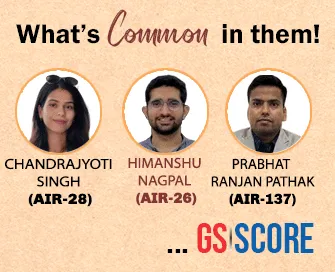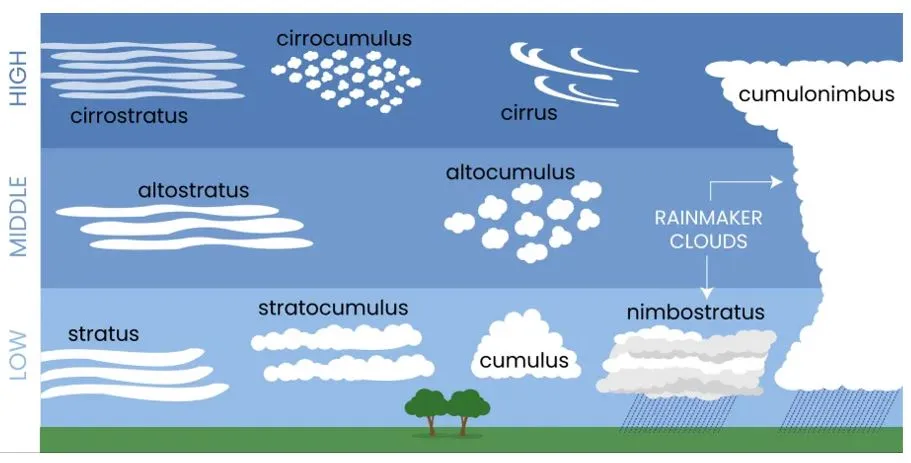

31st March 2025 (31 Topics)
Mains Issues
Context
A recent study shows that during India’s summer monsoon, deep convective clouds (which bring heavy rain) have risen by about 1 km in the last 20 years. This means more intense monsoon rains and extreme weather events like floods and heavy storms.
Why is this Happening?
- Warmer Oceans: The Indian Ocean’s rising temperature is fueling stronger cloud formation.
- Increased Convection: More heat and moisture lead to taller clouds, which bring more intense rainfall.
Impact on India
- More Floods in Northwest India: Stronger monsoon storms increase flooding risks in states like Rajasthan, Punjab, and Himachal Pradesh.
- Heavier Rain on Coastal Regions:
- Western Coast (Kerala, Karnataka, Maharashtra) sees intense rainfall due to warm ocean air.
- Eastern Coast (Odisha, Andhra Pradesh, West Bengal) experiences stronger storms.
- Increased Rain in Northeast India: States like Assam, Meghalaya, and Arunachal Pradesh may see more intense rainfall.
Fact Box:Types of Clouds (Based on Height and Appearance) A. High Clouds (Above 6,000 meters)
B. Middle Clouds (2,000–6,000 meters)
C. Low Clouds (Below 2,000 meters)
D. Vertical Clouds (Can Grow from Low to High Levels)
Deep Convective Clouds
Indian Monsoon
|
PYQQ. How far do you agree that the behavior of the Indian monsoon has been changing due to humanizing landscape? Discuss. (2015) |


Mains Issues
Context
Chief Justice of India Sanjiv Khanna has constituted a three-member panel to examine the alleged recovery of a huge stash of cash from the residence of sitting Delhi High Court Judge Justice Yashwant Varma.
How a Sitting Judge Can Be Removed From Office?
- The Indian Constitution provides that a judge can be removed from office only by an order of the President.
- The process of impeachment of a judge of the Supreme Court is laid down in Article 124(4) of the Constitution of India.
- Article 218 says the same provisions shall apply in relation to a judge of the High Court.
- However, this drastic step is not taken lightly. The removal process is designed to ensure judicial independence while also maintaining accountability.
- The process is outlined in the Judges Inquiry Act, 1968.
Key Steps in the Removal Process
- Initiation of the Impeachment Motion: The process can start in either house of Parliament.
- For the Lok Sabha, at least 100 members must sign a notice.
- For the Rajya Sabha, at least 50 members must sign a notice.
- Once the notice is submitted, the Speaker (for Lok Sabha) or the Chairman (for Rajya Sabha) examines the complaint and decides whether to admit the motion.
- Formation of an Investigatory Committee: If the motion is admitted, a three-member committee is formed. This committee is made up of:
- A judge from the Supreme Court
- The Chief Justice of a High Court
- A distinguished Jurist
- This panel investigates the charges and frames the specific allegations against the judge. A copy of these charges is then sent to the accused judge, who is given an opportunity to present a written defence.
- Review and Debate in Parliament: After the committee completes its investigation, it submits a report to the Speaker or Chairman. The report is then discussed in the respective house of Parliament. For the motion to pass, it must be adopted by:
- A majority of the total membership of the house, and
- At least two-thirds of the members present and voting.
- Once one house passes the motion, it is sent to the other house for consideration.
- Final Decision by the President: If both houses of Parliament adopt the motion, the final step is for the President to issue an order removing the judge from office.
What is the In-House Inquiry Process?
Before a judge faces impeachment proceedings in Parliament, there is an internal or "in-house" inquiry process to address allegations of misconduct.
- Initial Complaint and Decision: When a complaint is received, the Chief Justice of India (CJI) first decides if further investigation is necessary. The accused judge is asked for a response, and the Chief Justice of the respective High Court is required to submit a report.
- Formation of a Probe Committee: If the complaint warrants further investigation, the CJI may set up a three-member panel.
- For a regular High Court judge, the panel usually comprises:
- Two Chief Justices (CJs) from other High Courts,
- One judge from a High Court.
- For a High Court Chief Justice, the panel includes:
- One Supreme Court judge and two High Court Chief Justices.
- For a Supreme Court judge, the panel consists of three Supreme Court judges.
- For a regular High Court judge, the panel usually comprises:
- Investigation and Recommendations: The panel conducts a detailed inquiry and prepares a report. If the panel finds that the judge’s conduct merits removal, the CJI can advise the judge to resign.
- If the judge refuse to resign, the CJI has the authority to:
- Remove the judge from handling judicial duties,
- Inform the President and the Prime Minister, thereby triggering formal impeachment proceedings.
- If the alleged misconduct is less serious, the CJI may choose to issue advice or a warning to the judge.
- If the judge refuse to resign, the CJI has the authority to:
Why This Process Matters?
- Judicial Independence vs. Accountability: The removal process is deliberately stringent to ensure that judges can perform their duties without fear of political retribution, while still providing a mechanism to remove those who commit serious misconduct.
- Checks and Balances: By involving multiple branches of government—the judiciary (through the CJI and probe committees) and the legislature (through Parliament)—the process ensures that no single entity has unchecked power over a judge’s tenure.
- Unlike politicians, most judges are not legally required to disclose their assets, contributing to low transparency.
- Public Confidence: A transparent and fair process is crucial for maintaining public trust in the judicial system, especially when high-profile cases raise concerns over integrity and accountability.
How the Indian Judiciary Protects Its Interests?
- Kesavananda Bharati vs. State of Kerala (1973) challenged Kerala’s land reform that restricted religious institutions’ land holdings.
- Outcome: Established the "basic structure" doctrine, limiting Parliament’s power to amend core constitutional features, thereby safeguarding judicial independence.
- K. Veeraswami vs. Union of India (1991): Former Chief Justice K. Veeraswami contested criminal charges under the Prevention of Corruption Act.
- Outcome: Ruled that Supreme Court and High Court judges, as “public servants,” require prior sanction before prosecution, protecting them from politically motivated charges.
- Supreme Court Advocates-on-Record Association vs. Union of India (1993) – Birth of the Collegium System: A dispute over judicial appointments led to a challenge against executive control.
- Outcome: The Supreme Court redefined "consultation" as "concurrence," establishing the collegium system where senior judges, led by the Chief Justice of India, hold the final say on appointments.
- Judicial Standards and Accountability Bill (2010) proposed to require judges to disclose assets and set up oversight committees.
- Outcome: Faced strong resistance from within the judiciary; although passed in the Lok Sabha, it stalled in Parliament due to concerns over judicial independence.
- NJAC Case – Supreme Court Advocates-on-Record Association vs. Union of India (2015): The NJAC aimed to replace the collegium system with a commission involving executive and legislative members.
- Outcome: The Supreme Court struck down the NJAC as unconstitutional, reaffirming the collegium system to protect judicial autonomy.
- Justice CS Karnan vs. Supreme Court of India (2017): Justice CS Karnan was imprisoned after making controversial remarks against fellow judges.
- Outcome: Highlighted internal disciplinary measures within the judiciary, though critics argued it served to shield the institution from external accountability.
PYQQ. With reference to the Indian judiciary, consider the following statements: (2021)
Which of the statements given above is/are correct?
Solution: (c) |

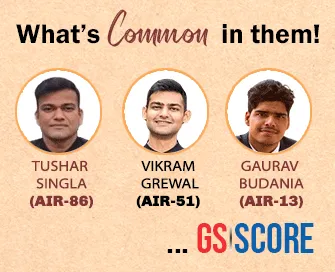
Mains Issues
Context
In a recent decision by the King’s Bench Division of the High Court of Justice in London, concerns were raised about the potential risk of custodial mistreatment if Sanjay Bhandari were to be extradited to India. The court, mindful of India's non-ratification of the United Nations Convention against Torture (UNCAT), recognized credible apprehensions regarding the conditions awaiting him in custody. Bhandari, facing charges related to tax evasion and money laundering, thus benefited from this protective stance.
Custodial Torture:
- In India, incidents of torture in police custody have raised serious concerns about human rights and the proper implementation of criminal laws.
- In 2019, approximately 1,723 custodial deaths were reported—averaging about five deaths every day.
Reasons for the continuing impunity for Custodial Torture
- Systemic failure: The problem of custodial torture stems from a systemic failure within law enforcement agencies, where violence is often normalised as part of police work.
- o Despite strict guidelines, the authorities routinely fail to conduct rigorous investigations and prosecute police officials implicated in torture and ill-treatment of arrested persons.
- Lack of Comprehensive Legislation: Although India signed the UN Convention Against Torture (CAT), it has not ratified the treaty or enacted a central law to prevent custodial violence.
- Ineffectiveness: The NHRC, established under the Protection of Human Rights Act, 1993, monitors and addresses human rights violations, including custodial torture. Despite itsefforts, the persistent statistics indicate a gap in the enforcement of existing laws.
- Lack of Police Reforms: In 2006, the Supreme Court in a landmark decision, Prakash Singh v. Union of India, issued six binding directives to the central and state governments to kick-start police reforms.
- Extended Police Custody: Under Section 187 of the Nagarik Suraksha Sanhita, police may extend custody to complete investigations. However, this can give police ample time to extract confessions through coercion.
|
Fact Box: Custody
Legal and Constitutional Provisions:
Key Supreme Court Cases
|
|
PYQ Q. Though the Human Rights Commissions have contributed immensely to the protection of human rights in India, yet they have failed to assert themselves against the mighty and powerful. Analysing their structural and practical limitations, suggest remedial measures. (2021) |


Mains Issues
Context
The Global Energy Review 2025, released by the International Energy Agency, marks the impact of extreme weather on energy demand in 2024.
Key Findings of the Report
- Impact of Extreme Temperatures on Energy Demand
- Cooling Demand: Extreme heat drove a 20% contribution to the growth in both natural gas and electricity demand.
- Record Global Cooling Degree Days: A 6% increase compared to 2023, especially affecting regions like China, India, and the United States.
- o Growth in Global Electricity Demand: Global electricity demand grew by 4.3% in 2024, up from 2.5% in 2023.
- Sector Contributions:
- Buildings: Grew by 5% (over 600 TWh), driven by rising air conditioning needs and new data centres, accounting for nearly 60% of total electricity growth.
- Industry: Electricity use increased by nearly 4%, boosted by electro-intensive manufacturing.
- Transport: A rise of over 8% due to the growing adoption of electric vehicles; global electric car sales surged by over 25%.
- Generation Mix:
- 80% of the increase in global electricity generation came from renewable sources and nuclear power.
- Renewables alone provided 32% of total generation.
- Nuclear power added over 7 GW of new capacity, a 33% increase over 2023, marking the fifth-highest addition in three decades.
- Coal Use: Global coal demand rose by 1%, with China remaining the largest consumer (58% of global coal use). Coal emissions increased by 0.9% (135 Mt CO?).
- Natural Gas: Emissions from natural gas grew by around 2.5% (180 Mt CO?), making it the largest contributor to global carbon emissions growth, driven by higher consumption in major regions including China, the U.S., the Middle East, and India.
- 80% of the increase in global electricity generation came from renewable sources and nuclear power.


Mains Issues
Context
The Central Board of Direct Taxes (CBDT) has made important changes to India’s Income-Tax (I-T) Rules, 1962, to expand the scope of safe harbour rules. These changes, announced aim to provide tax benefits to electric vehicle (EV) and EV battery makers in India.
What Are Safe Harbour Rules?
- Safe harbour rules are defined under Section 92CB of the Income-tax Act, 1961 for the determination of arm’s length price under section 92C or section 92CA.
- Safe harbour means circumstances in which the income-tax authorities accept the transfer price as declared by the assessee.
- Transfer Price is the actual price charged in a transaction between related entities which are part of the same multi-national enterprises (MNE) group.
- Safe harbour rules help businesses by giving them tax certainty.
- They allow companies to determine the prices of their international transactions without disputes with tax authorities.
- If a company follows these rules, the tax department will accept their pricing without further questioning, reducing legal issues.
Key Changes in Safe Harbour Rules
- Higher Threshold for Safe Harbour: The limit for companies to qualify for safe harbour has been increased from Rs 200 crore to Rs 300 crore. This means more businesses can now benefit from tax certainty and avoid lengthy tax disputes.
- Inclusion of Lithium-Ion Batteries: Lithium-ion batteries used in electric or hybrid EVs are now considered core auto components. This helps battery manufacturers get tax benefits, encouraging investment in India’s EV industry.
- These amendments will be applicable for two assessment years: 2025-26 and 2026-27.
Who Benefits from These Changes?
- Large Companies: More businesses will be able to take advantage of safe harbour rules, reducing tax-related legal troubles.
- EV Industry: Battery manufacturers and EV makers get tax certainty, which will boost growth in the sector.
- Taxpayers: Companies involved in international transactions get clearer tax guidelines, making compliance easier and encouraging investment in India’s EV industry.


Mains Issues
Context
The Competition Commission of India (CCI) fined Meta Rs 213 crore and banned it from sharing WhatsApp user data with Facebook and Instagram for five years, citing unfair trade practices. However, the National Company Law Appellate Tribunal (NCLAT) stayed the ban and penalty, highlighting the challenges of regulating Big Tech in India. This case is a wake-up call for India to modernize its digital competition laws.
What is the core issue (data as a tool for market dominance)?
- The CCI's order stemmed from WhatsApp’s 2021 privacy policy update, which forced users to consent to expanded data-sharing.
- By aggregating WhatsApp’s user data with its broader ecosystem, Meta gained an unfair edge in online display advertising, strengthening its control over India’s digital economy.
- Key concerns raised by CCI:
- Take-it-or-leave-it model: Users had no real choice but to accept Meta’s data-sharing terms.
- Anti-competitive impact: Exclusive access to WhatsApp data gave Meta a self-reinforcing market advantage.
- Barrier to competition: Other messaging platforms struggled to compete with Meta’s entrenched dominance.
How Big Tech Uses Data to Cement Its Power?
- The 21st-century economy is data-driven, with digital platforms leveraging user data to consolidate power. Unlike traditional industries, data has unlimited utility—it can be collected, processed, and exploited indefinitely.
- Network Effects: More users generate more data, making platforms more valuable, attracting even more users.
- Personalized Advertising: Targeted ads powered by large-scale data analytics drive ad revenues, reinforcing dominance.
- Lock-in Effect: Seamless integration across platforms makes switching difficult, limiting consumer choice.
- Algorithmic Advantage: AI-powered personalization increases engagement, further monopolizing user attention.
- This ability to accumulate and utilize vast amounts of data enables companies like Meta to entrench their position, reducing market competition and raising concerns about consumer rights and privacy.
Challenges in Regulating Big Tech in India
- Old Competition Laws: The Competition Act, 2002 does not address data-driven monopolies.
- Lack of Coordination: Different regulatory bodies (CCI, MeitY) don’t work together effectively.
- Legal Loopholes: Outdated laws let Big Tech companies exploit unclear regulations.
- Global Reach of Tech Firms: National laws don’t apply effectively to companies operating worldwide.
- No AI Regulations: There are no clear rules on AI-generated content or algorithm-driven decisions.
- Platform Control: Companies like Google and Apple control app stores, advertising, and data, limiting fair competition.
India’s Competition Laws and Data Regulation
Basic Concepts
|


Mains Issues
Context
The ongoing trade negotiations between India and the United States have put a spotlight on agricultural market access. The US is pushing for greater entry into India's farm sector, emphasizing the principle of reciprocity in trade agreements. However, a major sticking point remains the disparity in government support for farmers in both countries. Extensive subsidies for American farmers make their produce significantly cheaper, raising concerns about fair competition and the potential impact on Indian farmers' livelihoods.
How India and the US Support Their Farmers?
- India: India’s agricultural support primarily targets small and marginal farmers by providing subsidized fertilizers, irrigation, and electricity.
- The Minimum Support Price (MSP) ensures price stability for key crops, while low-interest loans and crop insurance schemes help mitigate financial risks.
- United States: The US relies on direct financial support for farmers, ensuring income stability through various programs.
- These include Price Loss Coverage, which compensates farmers when market prices fall below a threshold, and Agriculture Risk Coverage, which provides financial protection against revenue losses.
- Additionally, the US government supports dairy farmers, offers extensive crop insurance, and provides disaster assistance in times of extreme weather events.
Challenges for Indian Agricultur
- Unequal Competition and Market Pressures: The significant difference in subsidy structures creates an uneven field for Indian farmers. While the high cost of inputs already makes Indian agriculture less competitive, the influx of cheaper American products could further erode their market position.
- If Indian tariffs on agricultural imports are lowered, local farmers may struggle to compete with heavily subsidized US goods, potentially affecting their income and livelihoods.
- Trade Commitments vs Domestic Needs: India has traditionally maintained high tariffs to shield its farmers from the impact of subsidized imports. The US, however, has been pushing for reduced tariffs to enhance its market access in India.
- India’s Position at the WTO: India has consistently defended its right to protect its agricultural sector under World Trade Organization (WTO) rules, which allow developing nations to use tariffs and subsidies to support their farmers.
- The principle of “non-reciprocity” recognizes that developed countries should not expect equal market access in return for trade concessions granted to emerging economies.
Government Subsidies for Farmers:
|
| PYQ
Q: What are the direct and indirect subsidies provided to farm sector in India? Discuss the issues raised by the World Trade Organization (WTO) in relation to agricultural subsidies. [2023] Q: WTO is an important international institution where decisions taken affect countries in a profound manner. What is the mandate of WTO and how binding are their decisions? Critically analyse India’s stand on the latest round of talks on Food security. [2014] |

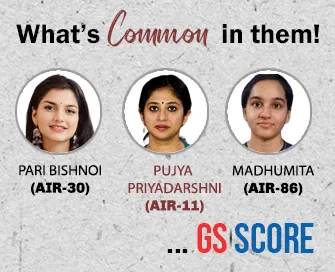
Prelims Articles
Context
India celebrates Shaheed Diwas, or Martyrs' Day on January 30 to honor different freedom fighters, March 23 holds special significance. On this day in 1931, three young revolutionaries—Bhagat Singh, Shivaram Rajguru, and Sukhdev Thapar—were executed by the British.
Why is March 23 Observed as Shaheed Diwas?
- March 23 marks the execution of Bhagat Singh, Rajguru, and Sukhdev in Lahore Central Jail. These three revolutionaries were part of the Hindustan Socialist Republican Association (HSRA), a group committed to overthrowing British rule through revolutionary activities.
- Their most notable action was the Lahore Conspiracy Case, in which they were accused of assassinating British police officer John Saunders in 1928.
- This act was in retaliation for the brutal lathi charge on Lala Lajpat Rai, a respected leader of the freedom movement, who succumbed to his injuries.
- Bhagat Singh – The Revolutionary Thinker
- Bhagat Singh was born on September 28, 1907 in the village of Banga in Lyallpurdistrict (present-day Faisalabad, Pakistan).
- He was an influential Indian revolutionary, great patriot, socialist revolutionary and freedom fighter known for his activism against British colonial rule.
- He supported Mahatma Gandhi in the Non-Cooperation Movement and was affected by the Jallianwala Bagh massacre (1919)and the violence against unarmed Akali protestors at Nankana Sahib (1921).
- He founded the Naujawan Bharat Sabhain the year 1926 to encourage the peasants and workers to fight against British rule. He was the secretary of that organisation.
- Singh joined the Kirti Kisan Partyin 1926 in Lahore. He started writing for ‘Kirti’ and wrote against the atrocities of the British.
- In 1928, the Hindustan Socialist Association (HSRA)was also established by him, along with Sukhdev, Chandrasekhar Azad and others.
- The main events which changed the course of the life of Bhagat Singh leading to his early martyrdom at the age of 23 were the –
- the Rowlatt Act
- the Jallianwala Bagh massacre
- the Non-Cooperation Movement
- the event at Chauri-Chaura
- the Kakori Train Conspiracy
- the Central Assembly bombing at Delhi
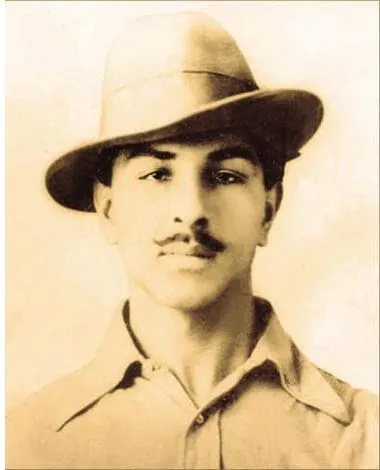
- Shivaram Rajguru – The Fearless Warrior
- Shivaram Hari Rajguru was born on August 24, 1908, in Khed, Maharashtra (now known as Rajgurunagar).
- Involvement in the Freedom Struggle: As he grew older, Rajguru became actively involved in the fight for independence. He first joined the Seva Dal, where he attended training camps at Ghatprab Later, he became a part of the Hindustan Socialist Republican Association (HSRA), an organization formed in 1928 by revolutionaries like Chandrasekhar Azad and Bhagat Singh.
- Rajguru was known for his sharp shooting skills, earning him the title of "Gunman of HSRA." His dedication to the cause made him an integral part of the revolutionary activities undertaken by the group.
- The Lahore Conspiracy Case: In 1928, Rajguru, along with Bhagat Singh and Sukhdev, was involved in the assassination of John Saunders, a British police officer. The act was meant to avenge the death of Lala Lajpat Rai, who had succumbed to injuries after a brutal police lathi charge during a peaceful protest.

- Sukhdev Thapar – The Strategic Mastermind
- Born on May 15, 1907, in Ludhiana, Punjab.
- He was a key member of the Hindustan Socialist Republican Association (HSRA), organizing revolutionary cells in Punjab and Northern India.
- He co-founded Naujawan Bharat Sabha (1926) to mobilize youth for India’s freedom struggle.
- He was involved in the Lahore Conspiracy Case (1928), where he, Bhagat Singh, and Rajguru avenged Lala Lajpat Rai’s death by mistakenly killing P. Saunders instead of James A. Scott.
- He participated in the 1929 Prison Hunger Strike against harsh treatment of prisoners.
- He was arrested and sentenced to death; hanged on March 23, 1931, in Lahore Central Jail at just 24 years old.
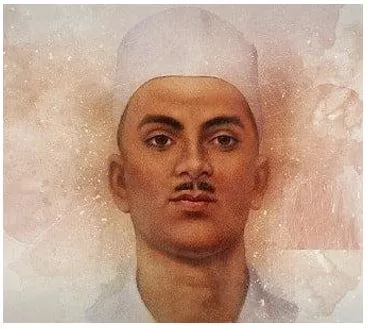
Fact Box:Important Events Rowlatt Act
Jallianwala Bagh Massacre
Non-Cooperation Movement
Chauri-Chaura
Kakori Train Conspiracy
Central Assembly Bombing at Delhi
|


Prelims Articles
Context
The Prime Minister, Shri Narendra Modi has paid tributes to Dr Ram Manohar Lohia on his birth anniversary.
About
- Dr Ram Manohar Lohia was born on March 23, 1910, in Akbarpur, located in Uttar Pradesh’s Ambedkar Nagar district. He passed away on October 12, 1967.
- Lohia played a crucial role in India’s struggle for independence and later emerged as a key figure in the country’s socialist political movements.
- He was associated with the Praja Socialist Party and the Samyukta Socialist Party.
- In the post-independence era, Lohia remained active in Indian politics, advocating for social justice and empowerment.
- In 1962, he contested against then Prime Minister Jawaharlal Nehru from Phulpur but lost.
- He later won a by-election in 1963, becoming a Member of Parliament from Farrukhabad.
- In 1967, he was elected from the Kannauj constituency.
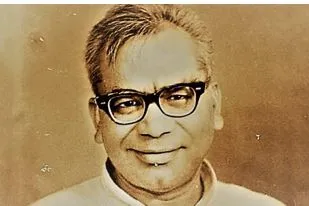


Prelims Articles
Context
The recently published World Happiness Report 2025 evaluates happiness levels across 147 countries based on individuals' self-assessed life satisfaction. The rankings are based on data from the Gallup World Poll (2022-2024), analyzed by leading well-being researchers.
Key Findings of the 2025 Report
- Nordic Nations Lead Globally: Finland retains the happiest country title for the eighth consecutive year, followed by Denmark, Iceland, Sweden, and the Netherlands.
- Taiwan Becomes the Happiest in Asia: Ranked 27th globally, Taiwan surpasses Singapore to become the happiest place in Asia.
Top 10 Happiest Places in Asia (2025):
|
- A major factor contributing to Taiwan’s happiness is social connectedness, particularly high levels of meal-sharing.
- The US has dropped to 24th place—its lowest ranking ever. Similarly, the United Kingdom finds itself at 23rd place, reflecting growing concerns over quality of life and economic uncertainty.
- India ranks 118th out of 147 countries, with a happiness score of 4.389. This places it below its neighbors Nepal, Bangladesh, and China. The drop is linked to growing mental health concerns, exacerbated by the challenges of the COVID-19pandemic and increasing economic pressures.
About the World Happiness Index
|

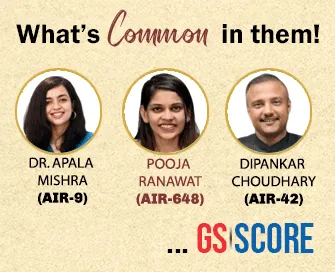
Prelims Articles
Context
As India prepares to assume chairmanship of Indian Ocean Rim Association (IORA) in November 2025, it aims to enhance funding, technology integration, and maritime education.
About IORA
- Established in: 1997
- The Indian Ocean Rim Association (IORA) is a key regional organization that fosters economic cooperation and security among countries in Asia, Africa, and Australia.
- As India prepares to assume chairmanship in November 2025, it aims to enhance funding, technology integration, and maritime education.
- Members: 23 members and 10 dialogue partners.
- Member countries: Australia, Bangladesh, Comoros, India, Indonesia, Iran, Kenya, Madagascar, Malaysia, Maldives, Mauritius, Mozambique, Oman, Seychelles, Singapore, Somalia, South Africa, Sri Lanka, Tanzania, Thailand, UAE, and Yemen.
- Newest country member: France first joined IORA as a “Dialogue Partner” in 2001, before becoming a formal Member State on 17 December 2020 (with effect from 1 January 2021).
- Dialogue partners: 11 dialogue partners: China, Egypt, Germany, Italy, Japan, Saudi Arabia, South Korea, Russia, Turkey, US and UK.
- Headquarters: Its Secretariat is based in Cyber City, Ebène, Mauritius.
- Strategic Importance of the Indian Ocean RegioN
- Critical Trade Route: Facilitates 75% of global trade and 50% of daily oil consumption.
- Economic Significance: Produces USD 1 trillion in goods and services; intra-IORA trade reached USD 800 billion in 2023.
- Security Challenges: Faces issues like piracy, terrorism, trafficking, and climate-related disasters.
- Development Gaps: Many member states struggle with economic limitations, political instability, and environmental degradation.
PYQQ. With reference to ‘Indian Ocean Rim Association for Regional Cooperation (IOR-ARC), consider the following statements: (2015)
Which of the statements given above is/ are correct?
Solution: (d) |


Prelims Articles
Context
In a historic first for Asia, former Philippines President Rodrigo Duterte was arrested and transferred to The Hague within five days of his warrant being issued. His case, along with ongoing investigations into leaders like Vladimir Putin and Benjamin Netanyahu, has sparked global debate over the International Criminal Court’s reach, legitimacy, and selective prosecution concerns.
About ICC
- ICC is the world’s first permanent international criminal court.
- It is governed by an international treaty called 'The Rome Statute'.
- ICC is not a UN organization but is has a cooperation agreement with the United Nations.
- Headquarters: The Hague, the Netherlands.
- Jurisdiction: The Rome Statute, grants the ICC jurisdiction over four main crimes:
- The crime of Genocide
- Crimes against Humanity
- War crimes
- Crime of Aggression
- Membership: Most countries on Earth – 123 of them – are parties to the treaty, but there are very large and notable exceptions, including Russia, India and the US. And, for that matter, Ukraine.
- Ukraine also is not a member of the international court, but it has granted it jurisdiction over its territory.
Rome Statute
|


Prelims Articles
Context
India hosted the 10th edition of the Raisina Dialogue in New Delhi, with New Zealand's Prime Minister, Christopher Luxon, as the Chief Guest.
What is the Raisina Dialogue?
- Launched in 2016 by the Ministry of External Affairs (MEA) and organized annually with the Observer Research Foundation (ORF).
- Named after Raisina Hills, where India's government institutions are located.
- India’s premier geopolitical and geo-economic conference, akin to the Munich Security Conference and Singapore's Shangri-La Dialogue.
- Brings together global leaders, policymakers, academics, industry experts, and journalists to discuss international challenges.
- Theme for 2025: "K?lachakra – People, Peace, and Planet".
Key Takeaways from Raisina Dialogue 2025
- Weaponisation of Trade & Economy: India’s External Affairs Minister (EAM) warned against the use of trade sanctions, tariffs, and financial controls as geopolitical tools.
- India is reassessing trade partnerships based on trust, transparency, and strategic alignment, particularly in talks with the US, EU, and UK.
- Indo-Pacific Concerns
- Quad defence leaders raised concerns over China's assertive maritime activities in the Indian Ocean Region (IOR).
- India reaffirmed its commitment to maintaining a peaceful and secure IOR through partnerships with small island nations and external allies.
- The Philippines invited India to join the "Squad" alliance (US, Japan, Australia, and the Philippines) to counter China's actions in the South China Sea.
- Digital Sovereignty: India is cautious about data flow, AI development, and digital trade regulations. Regulatory frameworks for big data and AI are becoming key components of India's economic diplomacy.
PYQQ.1 Consider the following pairs: (2020) International agreement/set-up : Subject
Which of the pairs given above is/are correctly matched?
Solution: (c) |


Prelims Articles
Context
The Assam Cabinet has decided to grant Permanent Residence Certificates (PRCs) to members of the Moran community residing in Arunachal Pradesh. This move comes in response to the long-standing demand of the community to be recognized as residents of Arunachal Pradesh, where they have struggled to obtain PRCs. The decision will allow them to access government jobs, educational opportunities, and reservations available to the Moran community in Assam.
About the Moran Community
- The Moran community is an indigenous ethnic group of Assam, belonging to the broader Tai-Ahom and Shan ethnic lineage.
- Morans were historically known as warriors and agriculturists, playing a key role in the formation of the Ahom kingdom.
- Geographical Spread: Primarily concentrated in Eastern Assam—notably in Tinsukia, Dibrugarh, and Sivasagar districts—with a sizable population in Arunachal Pradesh's Namsai district.
- Cultural Identity: The community follows a blend of Vaishnavism and indigenous traditions. They have a distinct linguistic and cultural heritage, contributing to Assam’s diverse ethnic landscape.
- Current Socioeconomic Status: The Moran community is classified as an Other Backward Class (OBC) in Assam and benefits from educational and employment reservations.


Prelims Articles
Context
The Centre notified a 24% increase in the salaries of MPs on March 24, 2025, effective from April 1, 2023.
Legal Basis:
- The hike in the salaries and pensions was notified in exercise of the powers granted under the Salary, Allowances and Pension of Members of Parliament Act on the basis of the Cost Inflation Index specified in the Income Tax Act of 1961.
- Other Benefits:
- Official Accommodation: MPs receive rent-free housing in New Delhi during their five-year term. Those who do not take up official accommodations are eligible for a monthly housing allowance.
- Article 106 of the Constitution empowers MPs to determine their salaries and allowances by enacting laws.
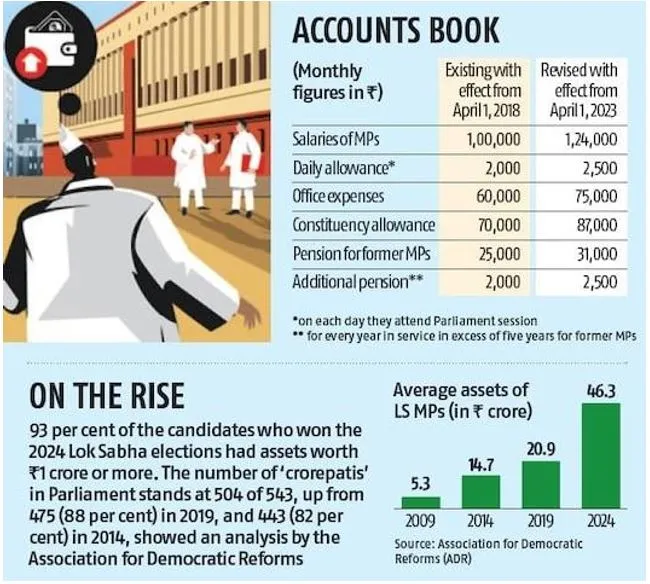
|
Fact Box: What is a Member of Parliament (MP)?
|

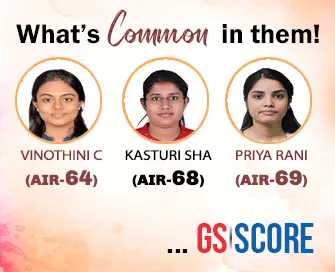
Prelims Articles
Context
The Centre for Development of Telematics (C-DoT), an autonomous Telecom R&D centre under the Department of Telecommunications (DoT), Government of India, has launched its first cohort of the ‘Samarth’ Incubation Program to foster innovation and technological advancements in the telecom sector.
About Samarth Program
- Samarth Program aims to support DPIIT-recognized startups developing next-gen technologies in Telecom Software, Cyber Security, 5G/6G, AI, IoT, and Quantum Technologies.
- Implementation: Run in partnership with Software Technology Parks of India (STPI) under MeitY.
- Support Offered:
- Supports 36 startups in two six-month cohorts.
- Provides hybrid learning, mentorship, infrastructure, and investor access.
- Funding: Startups receive Rs 5 lakh grants, C-DOT office space, lab facilities, and mentorship for six months.
- Future Prospects: Successful startups may collaborate under the C-DOT Collaborative Research Program.
About C-DoT
|


Prelims Articles
Context
Fast Track Special Courts (FTSCs) have significantly improved the speed of justice delivery in cases of rape and POCSO (Protection of Children from Sexual Offences) Act violations. With an impressive disposal rate of 96.28%, these courts have played a crucial role in addressing the backlog of sexual offense cases and ensuring timely justice for victims. In 2024 alone, FTSCs disposed of 85,595 cases out of 88,902 new cases instituted.
About Fast Track Special Courts (FTSCs)
- Fast Track Special Courts (FTSCs) are established to provide expedited trials for rape and POCSO Act cases under the Criminal Law (Amendment) Act, 2018.
- Implementation: The scheme is administered by the Department of Justice, Ministry of Law & Justice, in collaboration with State Governments and High Courts.
- Current Status:
- 745 FTSCs operational in 30 States & UTs, including 404 exclusive POCSO Courts.
- Over 3,06,604 cases disposed of to date.
- Each FTSC is expected to clear 41-42 cases per quarter (165 cases annually).
PYQQ.1 With reference to ‘consumers’ rights/privileges under the provisions of law in India, which of the following statements is/are correct? (2012)
Select the correct answer using the codes given below:
Solution: (c) |


Prelims Articles
Context
The share of private capital expenditure (capex) in India’s Gross Fixed Capital Formation (GFCF) has dropped to a ten-year low of 33 per cent in FY2024, according to a report by ICRA.
What is GFCF?
- Capital Formation is defined as that part of country’s current output and imports which is not consumed or exported during the accounting period, but is set aside as an addition to its stock of capital goods.
- Total Capital Formation can be broadly classified into
- Gross Fixed Capital Formation (GFCF)
- Change in stock of raw materials, semi-finished and finished goods.
- GFCF (Gross Fixed Capital Formation) refers to the investment in fixed assets (like buildings, machinery, etc.) that adds to the country's productive capacity.
- Statistics: It makes up about 30% of India's nominal GDP. Private capex now forms only 33% of GFCF—this is the lowest in the last 10 years.
- It is the second-largest component after private final consumption expenditure.
- Private Capex refers to the portion of these investments made by private companies.
PYQQ. A decrease in tax to GDP ratio of a country indicates which of the following? (2015)
Select the correct answer using the code given below:
Solution: (a) |


Prelims Articles
Context
In a significant policy shift, the Indian government has proposed to abolish the Equalisation Levy (EL) on online advertisements as part of amendments to the Finance Bill, 2025. This move is expected to benefit American tech giants like Google, Meta, and Amazon, and also ease trade tensions with the United States, which has criticized India’s digital taxation policies.
What is the Equalisation Levy (EL)?
- Introduced in 2016, the 6% equalisation levy was imposed on payments exceeding ?1 lakh per year made to non-resident service providers for online advertisements.
- It aimed to create a level playing field between Indian digital companies and foreign tech giants that earned revenue from India without paying direct taxes.
- This tax is often referred to as the “Google Tax” because it largely affected foreign digital advertising platforms.
Why is India Removing the Levy?
- Trade Diplomacy with the US: In 2020, India imposed an additional 2% equalisation levy on e-commerce platforms providing services in India, which faced strong opposition from the United States.
- The US Trade Representative (USTR) argued that India's digital tax discriminated against American companies and threatened retaliatory tariffs.
- To ease tensions, India removed the 2% EL in 2024 and is now proposing to remove the 6% EL on online ads from April 1, 2025.
- OECD Global Tax Framework: India, along with the US and other OECD/G20 nations, is working on a global digital taxation framework to replace unilateral taxes like the equalisation levy.
- Significant Economic Presence (SEP) Framework: India has introduced the Significant Economic Presence (SEP) concept, which allows taxation of foreign companies with a substantial digital footprint in India. This makes the equalisation levy redundant as SEP can address tax challenges more effectively.


Prelims Articles
Context
The National Stock Exchange (NSE) has launched a dedicated website for municipal bonds to boost transparency, investor awareness, and accessibility in this emerging asset class.
About the Website
- The website serves as a one-stop platform for investors, policymakers, and market participants to access:
- Municipal bond issuances – List of bonds issued by local governments.
- Credit ratings – Helps investors assess bond safety.
- Trading volumes & yields – Tracks bond performance and liquidity.
- Nifty India Municipal Bond Index – Measures the overall performance of municipal bonds in India.
- Market insights & regulations – Offers reports, guidelines, and real-time data.
- This initiative bridges the information gap in India's municipal bond market, encouraging both institutional and retail participation.
Municipal Bonds in India
What are Bonds?
|


Prelims Articles
Context
Scientists from the Institute of Nano Science and Technology in Mohali and the Bhabha Atomic Research Centre in Mumbai have developed a new security ink using nanoparticles of strontium bismuth fluoride doped with lanthanide ions to prevent counterfeiting.
The new Nanoparticle-Based Ink
- Scientists used a process called the coprecipitation technique.
- Metal salts were dissolved in a solvent.
- A precipitation agent was added while stirring.
- The solution was centrifuged to extract the nanoparticles.
- The material was blended with polyvinyl chloride ink.
- Screen printing was used to apply the ink to paper.
- The Two-Light Trick: Unlike conventional fluorescent inks, which glow under either ultraviolet or infrared light, this ink fluoresces under both.
- Under 365 nanometer ultraviolet light, it emits a blue glow
- Under 395 nanometer ultraviolet light, it emits a magenta glow
- Under 980 nanometer infrared light, it emits an orange-red glow
- This multi-wavelength fluorescence makes it more difficult to counterfeit.
Understanding Security Printing
|


Prelims Articles
Context
Every year, 24 March is observed as World TB Day to amplify the urgency of ending tuberculosis (TB), the world's deadliest infectious disease.
About Tuberculosis (TB)
- TB is caused by a bacterium known as Mycobacterium tuberculosis, which belongs to a family of around 200 bacteria species called Mycobacteriaceae.
- Types of TB:TB primarily affects the lungs (pulmonary TB) in humans. However, it can also affect other organs (extra-pulmonary TB).
- Historical Context:TB is an ancient disease, with evidence of its existence dating back to 3000 BC in Egypt.
- Treatability:TB is treatable and curable with appropriate medication and management.
- Transmission:TB spreads from person to person through the air. When individuals with lung TB cough, sneeze, or spit, they release TB germs into the air, which can be inhaled by others.
- Treatment: Current biomedical strategies to reduce new infections include the
- BCG vaccine, which protects against severe forms of childhood TB
- Tuberculosis preventive treatment (TPT) which aims to cover other household contacts, clinical-risk groups apart from children younger than five years and household contacts with HIV
- Effective rifamycin-based regimes
National and international initiatives:
|


Prelims Articles
Context
A team of researchers from China and Japan has found experimental evidence that Niobium Diselenide (NbSe?) exhibits properties of a Bose metal.
What is a Bose Metal?
- It is a quantum state where electron pairs (Cooper pairs) form but do not transition into superconductivity.
- Unlike superconductors, Bose metals do not have zero resistance but conduct better than normal metals.
- Key Features:
- No Superconducting Transition – Copper pairs form, but the material does not reach zero resistance.
- Anomalous Metallic State (AMS) – Defies conventional theory that materials must be either superconductors or insulators at low temperatures.
- Intermediate Conductivity – Conductivity lies between that of insulators and superconductors, influenced by quantum fluctuations and external conditions.
- Applications: Quantum Computing, Advanced Electronics, Superconductivity Research
Niobium Diselenide (NbSe?)
|


Prelims Articles
Context
The Serbian government has denied allegations that its police used sonic weapons to disperse anti-government protesters.
What are Sonic Weapons?
- Sonic weapons use amplified sound waves to control crowds or disable targets. The United States first used them in Iraq in 2004.
- Types of Sonic Weapons:
- Long-Range Acoustic Device (LRAD) – Produces sounds up to 160 decibels, causing hearing damage and discomfort.
- Mosquito – Emits high-pitched sounds affecting only younger individuals (under 30).
- Infrasonic Weapons – Use low-frequency sounds to cause pain and disorientation.
Serbia and Kosovo Conflict
|


Prelims Articles
Context
The Union government has decided to put on hold the rollout of a satellite-based highway toll collection system that could eventually pave the way for fare booths to be removed.
What is the new proposed highway tolling system?
- The global navigation satellite system uses a large constellation of satellites to provide more accurate location and navigation information to users globally as compared to the GPS alone.
- The new system’s implementation will involve an On-Board Unit (OBU),or a tracking device, fitted inside a vehicle whose location can be mapped using
- The co-ordinates of the entire length of the country’s national highways will have to be logged with the help of digital image processing, and software will be used to assign the toll rate on a particular highway, calculate the toll amount for a vehicle as per the distance travelled by it and then deduct it from a wallet linked to the OBU.
- The system will additionally have gantries, or arches mounted with CCTV cameras, at various points on a highway for enforcement purposes.
- These will capture an image of the vehicle’s high security registration plate and cross verify if a road user is trying to trick the system by either removing the tracking device or travelling without an OBU onboard.
Fact Box:GPS Aided GEO Augmented Navigation (GAGAN)
|


Prelims Articles
Context
A new UNESCO report, "The United Nations World Water Development Report 2025 – Mountains and Glaciers: Water Towers," highlights the alarming rate of changes in mountain ecosystems due to global warming. Released on March 21 to mark the first-ever World Day for Glaciers, the report details how rising temperatures are drastically altering mountain landscapes.
Key Findings
- Since 1975, glaciers (excluding Greenland and Antarctica) have lost over 9,000 billion tonnes of ice—equivalent to a 25-meter-thick ice block covering Germany.
- Wildfires and dust storms are accelerating melting by depositing black carbon and particulate matter on glaciers, making them absorb more heat.
- In 2024 alone, glaciers lost 450 gigatons of mass, with regions such as Scandinavia and North Asia experiencing record-breaking losses.
- Glacier melt contributes to 25-30% of global sea-level rise. Between 2006 and 2016, glacier mass loss led to an increase of 1 mm in sea level per year, potentially exposing 300,000 people annually to flooding.
- Accelerating Permafrost Thaw: Permafrost, the permanently frozen ground, is melting at an increased rate, releasing large amounts of stored carbon into the atmosphere and exacerbating climate change.
- Mountain permafrost stores 4.5% of global soil organic carbon, and its thawing contributes to greenhouse gas emissions.
- Thawing permafrost destabilizes landscapes, increasing the risk of landslides and infrastructure collapse.
- Declining Snow Cover: Snow cover in most mountain regions has declined, particularly during spring and summer, and is projected to shrink further.
- Erratic Snowfall Patterns: The elevation at which snowfall occurs is shifting upwards due to warming.
Why Does This Matter?
- Around 2 billion people depend on mountain water from glaciers. If glaciers continue to melt at the current rate, water supply from these "water towers" will become erratic, affecting agriculture, drinking water, and hydropower.
- Melting glaciers and permafrost thaw increase the likelihood of glacial lake outburst floods (GLOFs)—sudden and destructive floods caused by the collapse of natural ice dams.
- In the past 200 years, GLOFs have resulted in over 12,000 deaths and severe damage to infrastructure, homes, and farmlands.
Key Concepts
|


Prelims Articles
Context
World Water Day is held every year on 22 March to raise awareness of global freshwater challenges and solutions.
About
- The day was established by the United Nations in 1992, during the world Conference on Environment and Development in Rio de Janeiro.
- The celebration is closely linked to Sustainable Development Goal (SDG) 6, which aims to ensure water and sanitation for all by 2030.
- Currently, around 2.2 billion people lack access to clean and safe drinking water.
- Theme 2025: Glacier Preservation
- Concerned Findings:
- Since 1975, glaciers worldwide (excluding the Greenland and Antarctic ice sheets) have lost over 9,000 billion tons of ice—an amount that would form a 25-meter-thick ice sheet over Germany.
- According the World Meteorological Organization (WMO) and the World Glacier Monitoring Service (WGMS), five of the past six years have recorded the fastest glacier retreat on record.
- The period from 2022 to 2024 saw the largest three-year loss of glacier mass ever documented. The year 2024 marked the third consecutive year of net glacier mass loss in all 19 monitored regions.
- Glacier melt is now the second-largest contributor to rising sea levels, following ocean warming. Between 2000 and 2023, glaciers lost 6,542 billion tons of ice—causing an 18 mm rise in sea level.
- In 2010, the United Nations recognised the human right to water and sanitation, stating that everyone has the right to sufficient, safe, acceptable, and affordable water for personal and domestic use.
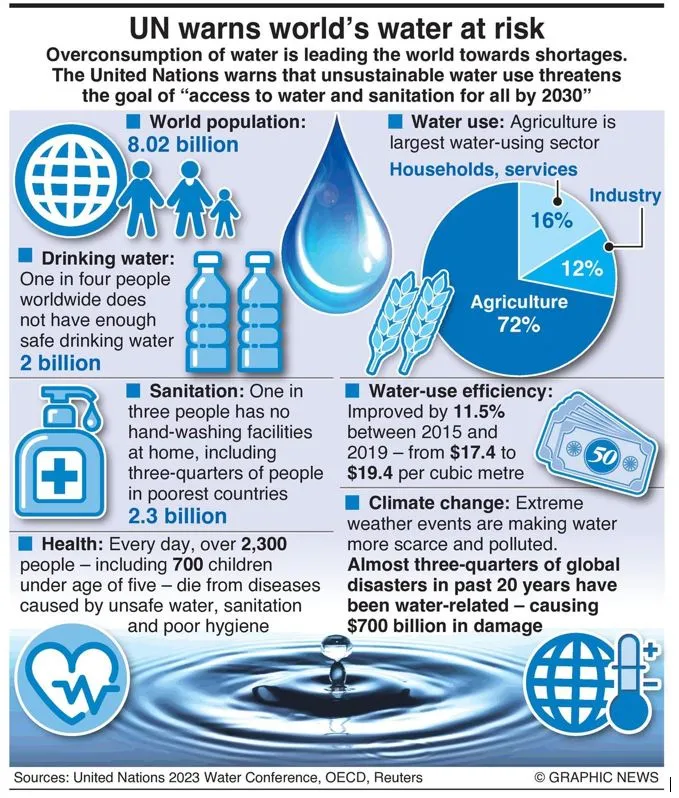
|
According to the NITI Aayog report, nearly 600 million Indians face high-to-extreme water stress, with around 200,000 people dying annually due to inadequate access to safe water. |


Prelims Articles
Context
Every year on March 21, the world celebrates the International Day of Forests to celebrate all types of forests, recognize the importance of trees and forests, and take action to protect them.
About
- Forests cover about 31% of the Earth's land. They are home to 80% of terrestrial species, from plants to animals.
- In year 2012, the United Nations declared March 21 as the International Day of Forests (IDF) to celebrate and raise awareness about the vital role of forests.
- Theme 2025: "Forests and Food," which emphasizes the deep connection between forests and global food security.
Fact Box:India State of Forest Report (ISFR) 2023,
Forest Conservation Schemes/Initiatives
|
PYQQ1. At the national level, which ministry is the nodal agency to ensure effective implementation of the Scheduled Tribes and Other Traditional Forest Dwellers (Recognition of Forest Rights) Act, 2006? (2021)
Solution: (d) Q2. A particular State in India has the following characteristics: (2012)
Which one among the following States has all the above characteristics?
Solution: (a) |


Prelims Articles
Context
World Sparrow Day (WSD) is celebrated every year on March 20th.
About World Sparrow Day:
- World Sparrow Day is an initiative started by the Nature Forever Society of India along with the Eco-Sys Action Foundation of France.
- The Society was started by a dedicated conservationist Mohammed Dilawar.
- He was named by the Time as one of the "Heroes of the Environment" in 2008.
- The first World Sparrow Day was organised in 2
- In 2011, the World Sparrow Awards were established.
- The award recognises persons who have made significant contributions to environmental conservation and ordinary species protection.
- The day aims to raise awareness and protect the common house sparrows, which are not so commonly seen now due to increasing noise pollution.
About the Sparrow (Passer domesticus)
|


Prelims Articles
Context
A global study published in PLOS Biology has revealed the significant impact of targeted conservation efforts in preventing the extinction of numerous animal species. The study highlights how species-specific conservation actions have led to positive changes in the status of various species, showing that well-planned, focused interventions can indeed turn the tide in the fight against global biodiversity loss.
How Have Targeted Conservation Efforts Impacted Global Biodiversity?
- Direct Impact:
- Nearly 99.3% of species that improved in the IUCN Red List category since 1980 benefited from conservation actions.
- Among 969 species with increasing populations, 78.3% had active conservation interventions in place.
- Species-Specific Outcomes:
- Iberian Lynx: From a near extinction crisis, the Iberian lynx population has grown from just a few hundred to several thousand individuals through targeted breeding programs and habitat management.
- K?k?p?: The critically endangered nocturnal parrot of New Zealand, the k?k?p?, saw recovery thanks to intensive monitoring and predator control measures.
- European Bison: This species was hunted to extinction in the wild during the early 20th century but is now thriving in parts of Eastern Europe through successful reintroduction programs.
- Whales: Populations of humpback and blue whales, which were decimated by commercial whaling, have rebounded significantly following the international moratorium on whaling.
India's Species-Specific Conservation Programme
|


Prelims Articles
Context
A rare and exciting sighting of the Indian Long-Billed Vulture (Gyps indicus) at the Ramadevara Betta Vulture Sanctuary in Karnataka has underscored the success of protected area-based conservation efforts.
Ramadevara Betta Vulture Sanctuary:
- The Sanctuary is located in the Ramadevara Betta Hill Range, Ramanagara, Karnataka.
- It was established in 2012 as India’s first and only vulture sanctuary.
- It was notified as an Eco-Sensitive Zone (ESZ) in 2017 to protect endangered vulture species.
- It is home to three vulture species found in India:
- Indian Long-Billed Vulture (Gyps indicus)
- Egyptian Vulture (Neophron percnopterus)
- White-Backed Vulture (Gyps bengalensis)
Indian Long-Billed Vulture:
|

